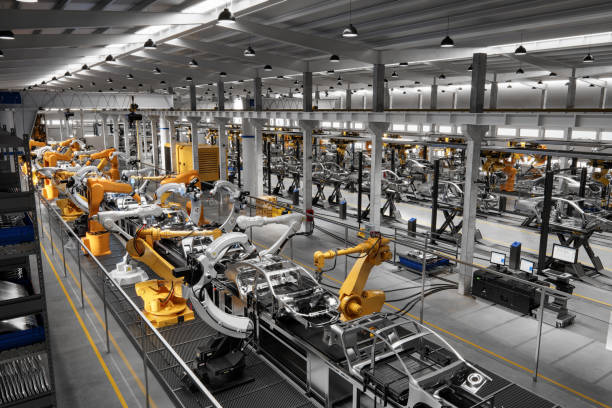In the competitive world of manufacturing, efficiency isn’t just a goal; it’s a necessity. A well-maintained facility can significantly impact productivity, safety, and cost-effectiveness. Here are some top tips to help you maximize efficiency through effective maintenance practices.
1. Develop a Comprehensive Maintenance Plan
A well-structured maintenance plan is the cornerstone of facility efficiency. Start by documenting all equipment and systems within your facility. Create a schedule that includes regular inspections, preventive maintenance tasks, and necessary repairs.
This plan should be detailed, specifying the frequency of tasks, responsible personnel, and required resources. A good maintenance plan ensures that potential issues are identified and addressed before they escalate into costly breakdowns.
2. Implement Preventive Maintenance
Preventive maintenance (PM) is a proactive strategy designed to avert equipment failures before they happen. This approach entails performing scheduled maintenance tasks at set time intervals or according to usage metrics.
For example, regular activities such as hydraulic machinery repair, lubrication, calibration, and cleaning can mitigate wear and tear, minimize unexpected downtime, and extend the equipment’s operational life. By adopting a preventive maintenance program, you can achieve considerable cost savings by sidestepping emergency repairs and minimizing production delays.
3. Utilize Predictive Maintenance Technologies
Advancements in technology have introduced predictive maintenance (PdM), which uses data-driven insights to anticipate equipment failures. PdM involves monitoring equipment conditions through sensors and analytics to predict when maintenance is needed.
Techniques such as vibration analysis, thermal imaging, and oil analysis can provide real-time data on equipment health. By predicting failures before they happen, you can schedule maintenance activities more efficiently and avoid unplanned downtime.
4. Invest in Training and Development
A well-trained maintenance team is crucial for efficient facility operations. Invest in regular training programs to keep your team updated on the latest maintenance techniques, safety protocols, and equipment handling procedures.
Training helps in improving skills, enhancing problem-solving abilities, and ensuring that maintenance tasks are performed correctly. Empowered and knowledgeable staff can identify issues early and execute repairs with precision, contributing to overall efficiency.
5. Adopt Lean Maintenance Practices
Lean maintenance focuses on optimizing maintenance processes to eliminate waste and improve efficiency. By applying lean principles, you can streamline workflows, reduce downtime, and enhance resource utilization.
Techniques such as 5S (Sort, Set in order, Shine, Standardize, Sustain) and value stream mapping can help in organizing maintenance tasks, improving communication, and eliminating non-value-added activities. Lean maintenance ensures that every action contributes to the efficiency of the facility.
6. Monitor Key Performance Indicators (KPIs)
Tracking and analyzing key performance indicators (KPIs) is essential for assessing maintenance effectiveness. Common KPIs include equipment uptime, mean time to repair (MTTR) and mean time between failures (MTBF).
Monitoring these metrics helps in evaluating the performance of maintenance activities, identifying areas for improvement, and making data-driven decisions. Regularly reviewing KPIs allows you to adjust maintenance strategies and optimize facility operations.
7. Emphasize Safety and Compliance
Safety should be a top priority in any maintenance program. Ensure that all maintenance activities comply with industry regulations and safety standards. Provide personal protective equipment (PPE), conduct regular safety audits, and implement safety protocols to protect your team. A safe working environment not only prevents accidents but also minimizes the risk of costly disruptions and legal issues.
8. Foster a Culture of Continuous Improvement
Encouraging a culture of continuous improvement can drive ongoing efficiency gains. Engage your team in regular reviews of maintenance processes and solicit their feedback on potential improvements. Foster an environment where suggestions for enhancements are welcomed and acted upon. Continuous improvement initiatives can lead to innovative solutions, better practices, and a more efficient maintenance operation.
9. Leverage Technology and Automation
Incorporating technology and automation into your maintenance processes can significantly enhance efficiency. Maintenance management software (CMMS) can help in scheduling tasks, tracking work orders, and managing inventory.
Automated systems can streamline routine maintenance tasks, such as lubrication and calibration, reducing manual effort and minimizing human error. Embracing technology can lead to more efficient operations and better management of maintenance resources.
10. Evaluate and Adjust Maintenance Strategies
Regularly evaluating your maintenance strategies is crucial for maximizing efficiency. Periodically review your maintenance plan, assess the effectiveness of implemented practices, and adjust strategies based on performance data and feedback.
Staying adaptable and responsive to changes in equipment conditions and operational demands ensures that your maintenance approach remains effective and aligned with facility goals.
Conclusion
Maintaining a manufacturing facility efficiently requires a combination of strategic planning, proactive approaches, and ongoing evaluation. By developing a comprehensive maintenance plan, leveraging predictive technologies, investing in training, and adopting lean practices, you can significantly enhance the efficiency of your operations.
Emphasizing safety, fostering continuous improvement, and utilizing technology further contribute to a well-maintained and productive facility. Implementing these top tips will help you achieve optimal performance, reduce downtime, and drive long-term success in your manufacturing endeavors.

